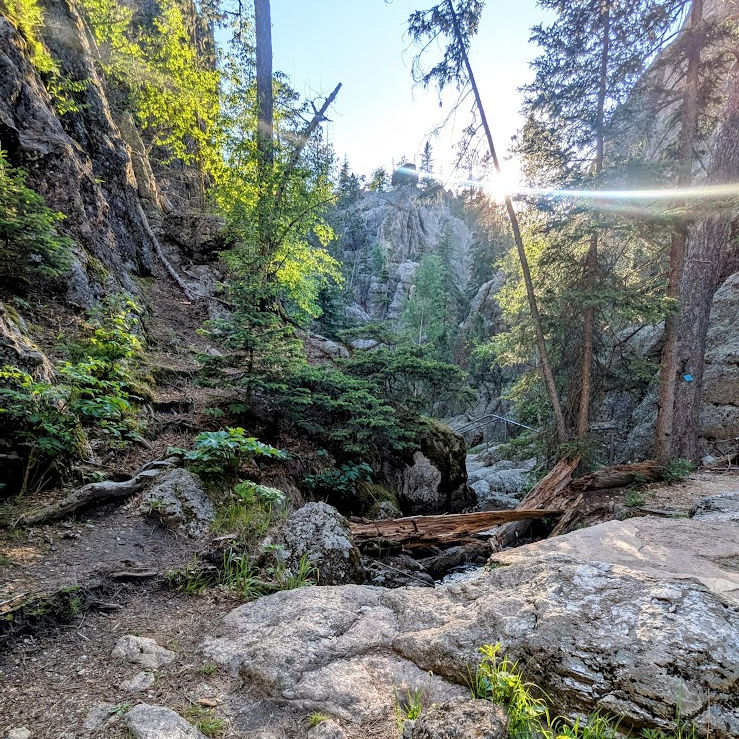Reconnect with Nature: The Science-Backed Benefits of Grounding and Forest Bathing
- Kayla Mathieu

- Jul 21
- 3 min read

Affiliate Disclosure: This post may contain affiliate links. If you click through and make a purchase, I may earn a small commission at no extra cost to you. Thank you for supporting my blog and helping me continue to share valuable content!
In a world that never seems to slow down, the ancient practices of grounding and forest bathing are gaining scientific credibility—and popularity—as natural ways to reduce stress, improve mental clarity, and restore physical well-being. Whether you’re searching for “how to reduce anxiety naturally” or “best forest bathing trails near me,” this guide will help you understand what grounding and forest bathing are, how they work, and how to integrate them into your everyday life.
What Is Grounding? (Also Known as Earthing)

Grounding is the practice of making direct physical contact with the Earth’s surface—such as walking barefoot on grass, soil, or sand—to rebalance the body’s electrical charge. This contact allows your body to absorb free electrons from the Earth, which act as powerful antioxidants.
Scientific Evidence Supporting Grounding:
A 2012 study published in the Journal of Environmental and Public Health found that grounding reduces inflammation, improves sleep, and supports immune function.
Grounding has been linked to reductions in cortisol (the stress hormone) and improvements in heart rate variability, an indicator of nervous system balance.
What Is Forest Bathing (Shinrin-Yoku)?
Originating in Japan, Shinrin-yoku, or forest bathing, is the act of immersing oneself in a forest environment through slow, mindful movement and sensory engagement. Unlike hiking, forest bathing isn’t about physical exercise—it’s about presence, stillness, and tuning in to the sights, sounds, and scents of the forest.
Scientific Evidence Supporting Forest Bathing:
A study from Environmental Health and Preventive Medicine found that people who spent time in forests had lower levels of cortisol, lower blood pressure, and improved mood.
Forest environments are rich in phytoncides, antimicrobial compounds released by trees that boost immune cell activity, particularly natural killer (NK) cells, which fight viruses and tumors.
How Grounding and Forest Bathing Work Together
Both grounding and forest bathing regulate the nervous system and reduce the stress response. When combined—such as walking barefoot in a forest—they amplify each other's effects:
Enhanced parasympathetic (rest-and-digest) nervous system activity
Reduced inflammation and oxidative stress
Increased emotional resilience and mental clarity
How to Get the Most Out of Grounding and Forest Bathing
1. Choose the Right Location:
Look for undeveloped, natural green spaces with trees, soil, grass, or clean sand.
2. Go Barefoot:
Remove shoes to establish skin-to-earth contact.
Beaches, grassy fields, and woodland trails with soft soil are ideal.
3. Slow Down & Use Your Senses:
Pause to smell pine needles, touch tree bark, listen to bird songs, and observe light filtering through the leaves.
4. Avoid Distractions:
Leave your phone on airplane mode or at home.
The goal is to be fully present with nature.
5. Duration Matters:
Even 20 minutes of forest bathing or grounding can lower stress levels.
For deeper benefits, aim for 1–2 hours weekly.
6. Practice Regularly:
Like meditation or exercise, the benefits of grounding and forest bathing accumulate over time.
Additional Benefits of Grounding & Forest Bathing:
Reduced symptoms of depression and anxiety
Enhanced creativity and focus (especially helpful for children and neurodivergent individuals)
Lower blood pressure and heart rate
Better sleep quality
Strengthened immune system
FAQ: Grounding & Forest Bathing

Q: Can you practice grounding indoors?
A: Yes. Using grounding mats or conductive bedsheets connected to the Earth’s charge can simulate some benefits of outdoor grounding.
Q: What should I wear for forest bathing?
A: Comfortable, non-restrictive clothes suited to the weather. Avoid bright colors or loud fabrics that might interfere with the calming effect.
Q: Do I need to meditate while forest bathing?
A: No. Forest bathing is not meditation. It’s simply being mindful and aware of your surroundings in a relaxed, non-judgmental way.
Q: Are grounding and forest bathing safe for children?
A: Absolutely. In fact, research shows nature time improves attention span, reduces hyperactivity, and supports emotional regulation in kids.
Q: Is there a best time of day to practice?
A: Morning light supports circadian rhythm regulation, while evening grounding can promote better sleep.
Q: What if I live in a city?
A: Try nearby parks, botanical gardens, or even your backyard. Any green space where you can connect with natural elements counts.
Ready to Reconnect with the Earth?
Subscribe to our YouTube channel Wandering Past Limits for visual guides to grounding spots, forest bathing trails, and real-life mental health journeys powered by nature.
Let nature do what it does best: heal, ground, and inspire.






Comments